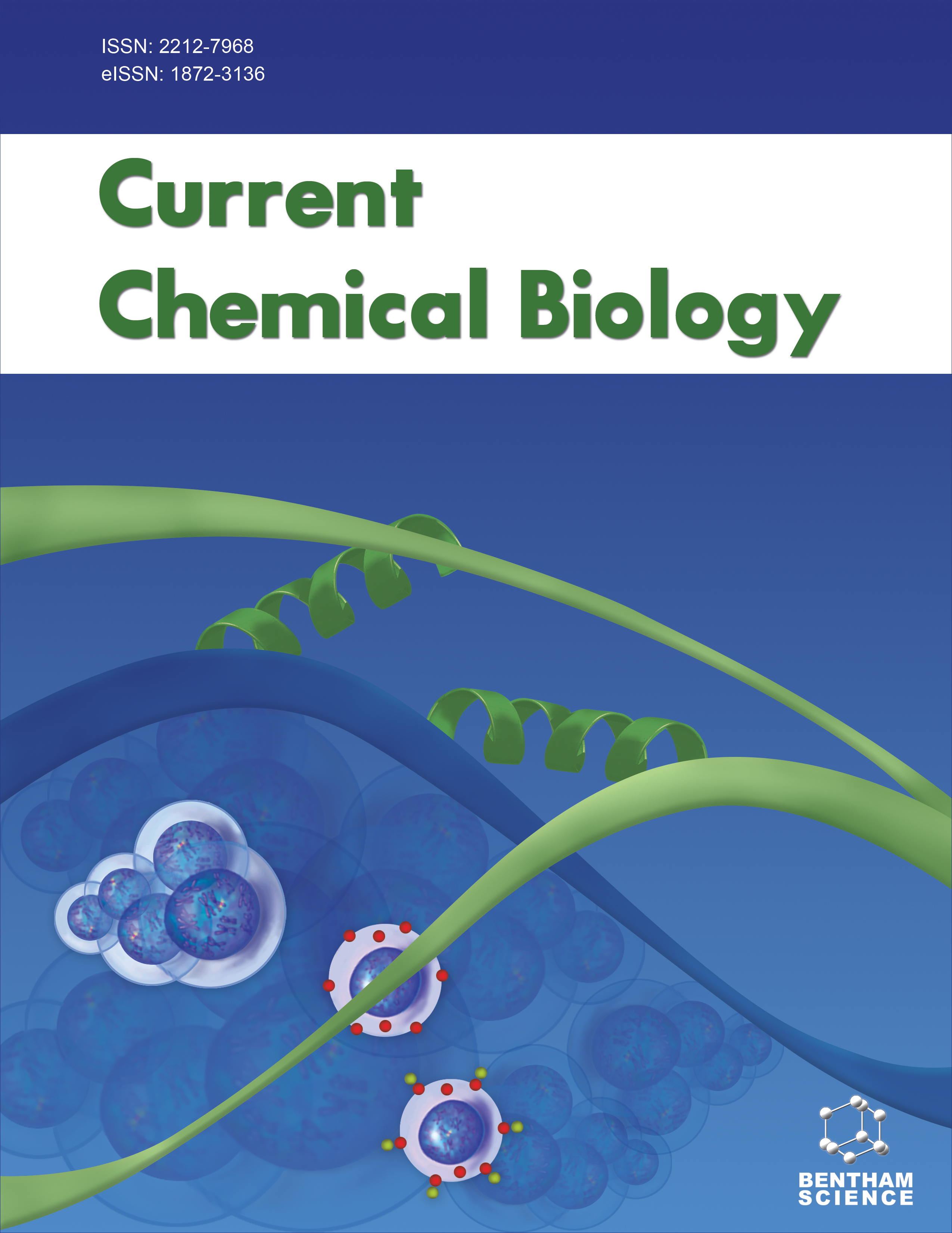- Home
- A-Z Publications
- Current Chemical Biology
- Previous Issues
- Volume 3, Issue 1, 2009
Current Chemical Biology - Volume 3, Issue 1, 2009
Volume 3, Issue 1, 2009
-
-
Aging and DNA Methylation
More LessAuthors: Jei Kim, Jee-Yeon Kim and Jean-Pierre J. IssaHuman longevity is influenced by both inherited and environmental factors. Alterations in gene function that are related to inherited genetic mutations and polymorphisms can explain some features of aging and age-related diseases. However, in addition to inherited genetic factors, aging is influenced by the gradual accumulation of molecular alterations after birth. Epigenetic changes can influence gene function duri Read More
-
-
-
Human 90 kDa Heat Shock Protein Hsp90 as a Target for Cancer Therapeutics
More LessAuthors: Lisandra M. Gava and Carlos H.I. RamosProtein misfolding causes a phenotype of disorders that is modulated by the action of multi-complexes formed by molecular chaperones and the proteasome machine. Hsp90 is a molecular chaperone involved in maintaining folding, stability and function of many proteins involved in apoptosis, signal-transduction pathways and cell-cycle regulation. Many of these proteins are usually deregulated in cancers and by keeping them Read More
-
-
-
Reactive Oxygen Species, Cancer and Anti-Cancer Therapies
More LessAuthors: Gina Manda, Marina T. Nechifor and Teodora-Monica NeaguMammalian cells produce reactive oxygen species (ROS) which are carcinogens, key actors of the non-specific immune defense against pathogens and, in a more subtle way, of signal transduction, cellular metabolism and functions. Oxidative stress can induce severe damage to the host which in turn adapted to face oxidative injury. Disruption of redox balance leads to various pathological conditions, such as cancer. In this revie Read More
-
-
-
Entropy and Enthalpy in the Activity of Tubulin-Based Antimitotic Agents
More LessAuthors: Erin M. Daly and Richard E. TaylorMicrotubules are important biological targets of antitumor chemotherapy. Tubulin polymerization inhibitors (TPIs) hinder polymerization whereas microtubule stabilizing agents (MSAs) promote tubulin polymerization and stabilize microtubules. The goal of enhancing binding affinity through favorable (positive) entropic contributions, a significant part of medicinal chemistry dogma, hinges on a rather simplistic assumption tha Read More
-
-
-
Therapeutic Approaches for Reducing C-Reactive Protein (CRP) Levels and the Associated Cardiovascular Risk
More LessAuthors: Fabrizio Montecucco and Francois MachSeveral inflammatory mediators regulate the evolution of atherosclerosis. C-reactive protein (CRP) is an acutephase reactant, with a direct effect in inflammatory processes characterizing atherosclerosis. For this reason, CRP is actually considered as a factor, rather than simply a cardiovascular risk marker. The recent demonstration of CRP production not only by the liver, but also within atherosclerotic plaques by activated vascu Read More
-
-
-
Bioactive N-Phenylimidazole Derivatives
More LessAuthors: Isidro M. Pastor and Miguel YusThis review article deals with different aspects of imidazole derivatives with one nitrogen atom bearing a substituted or unsubstituted phenyl moiety, such as their presence in bioactive compounds, their activity, as well as the main strategies for their preparation.
-
-
-
Polyphyllin D - A Potential Anti-Cancer Agent to Kill Hepatocarcinoma Cells with Multi-Drug Resistance
More LessTo develop drugs to kill cancer cells, we chemically synthesized a number of anti-cancer agents by adding different side chains to the core backbone of saponin. With the use of bioassay-guided methods, we found one agent that possessed a high cytotoxicity to a number of cancer cell lines. Interestingly, this compound was later found to be an active component of a tradition Chinese herb Paris polyphylla known as Poly Read More
-
-
-
The Use of Small Molecules to Correct Defects in CFTR Folding, Maturation, and Channel Activity
More LessAuthors: Meredith F.N. Rosser, Diane E. Grove and Douglas M. CyrCystic Fibrosis, one of the most common inherited lethal disease among Caucasians, is caused by mutations in the Cystic Fibrosis Transmembrane Conductance Regulator (CFTR) gene. The CFTR protein acts as a gated Cl- channel at the apical membrane of epithelial cells, thereby facilitating proper hydration of mucosal linings. Disease causing mutations in the CFTR protein can affect a variety of steps in the biogenesis of a fu Read More
-
-
-
Synthesis, Characterisation, Anti-Microbial Activity and Docking Studies of Novel Dispiro- Oxindolopyrrolidines
More Less2-arylidene-1,3-indanediones undergo a regioselective 1,3-dipolar cycloaddition reaction with the azomethine ylide derived from isatin and proline to give a rare class of novel complex dispirooxindolopyrrolizidines in better yield under microwave irradiation than classical heating. X-ray crystal structure analysis of one of the product confirms the structure and regiochemical outcome of the cycloaddition reaction. Anti-microbial Read More
-
Volumes & issues
Most Read This Month
Article
content/journals/ccb
Journal
10
5
false
en


